Statement I: D-Fructose is used for sweetening cold drinks but not hot ones.
Statement II: the sweet form is fructopyranose, on increasing termperature causes or shift in the pyranose ⇔ furanose equilibrium towards the less sweet furanose form.
Statement I is true, Statement II is true, Statements II is the correct explanation of Statement I.
Statement I is true, Statement II is true, Statement II is not the correct explanation of Statement I.
Statement I is true, Statement II is false.
Statement I is false, Statement II is true.
The correct Answer is:A
Both the statement are correct and statement II the is correct explanation of statement I.
Topper's Solved these Questions
- BIOMOLECULESBOOK - CENGAGE CHEMISTRY ENGLISHCHAPTER - BIOMOLECULESEXERCISE - Exercises Archives (Single Correct )
5 Videos
- BIOMOLECULESBOOK - CENGAGE CHEMISTRY ENGLISHCHAPTER - BIOMOLECULESEXERCISE - Exercises Archives (Assertion-Reasoning)
1 Videos
- BIOMOLECULESBOOK - CENGAGE CHEMISTRY ENGLISHCHAPTER - BIOMOLECULESEXERCISE - Exercises (Single Correcttype)
80 Videos
- AROMATIC COMPOUNDS AND ALKYL AND ARYL HALIDES BOOK - CENGAGE CHEMISTRY ENGLISHCHAPTER - AROMATIC COMPOUNDS AND ALKYL AND ARYL HALIDES EXERCISE - Archives Subjective Type
4 Videos
- CARBOXYLIC ACIDS AND THEIR DERIVATIVESBOOK - CENGAGE CHEMISTRY ENGLISHCHAPTER - CARBOXYLIC ACIDS AND THEIR DERIVATIVESEXERCISE - Exercises Archives (Analytical And Descriptive)
34 Videos
Similar Questions
Consider the following statements :
(I)An increase in pressure (caused by decrease in volume) at equilibrium results in increase in molar concentration of each gasous substances involved.
(II)An increase in pressure (caused by decrease in volume) at equilibrium results in increase in no. of moles of each gaseous substance involved.
(III)For the reaction A(s)⇔B(g)+C(g) at constant temperature, total pressure at equilibrium (of B(g) & C(g)) is not affected by changing the volume of container.
(IV)H2O(l)⇔H2O(g) on temperature increase K of this reaction is increased.
Tick the correct statement(s)
View Solutiona. Statement- 1 and Statement- 2 are true, and state-ment- 2 is the correct explanation of Statement- 1.
b. Statement- 1 and Statement- 2 are true but Statement- 2 is not the correct explanation of Statement- 1.
c. Statement- 1 is true and Statement- 2 is false.
d. Statement- 1 is false and Statement- 2 is true.
e. Statement- 1 is false and Statement- 2 is false.
Statement- 1:
Compound (I) is formed not (II).
 and
and 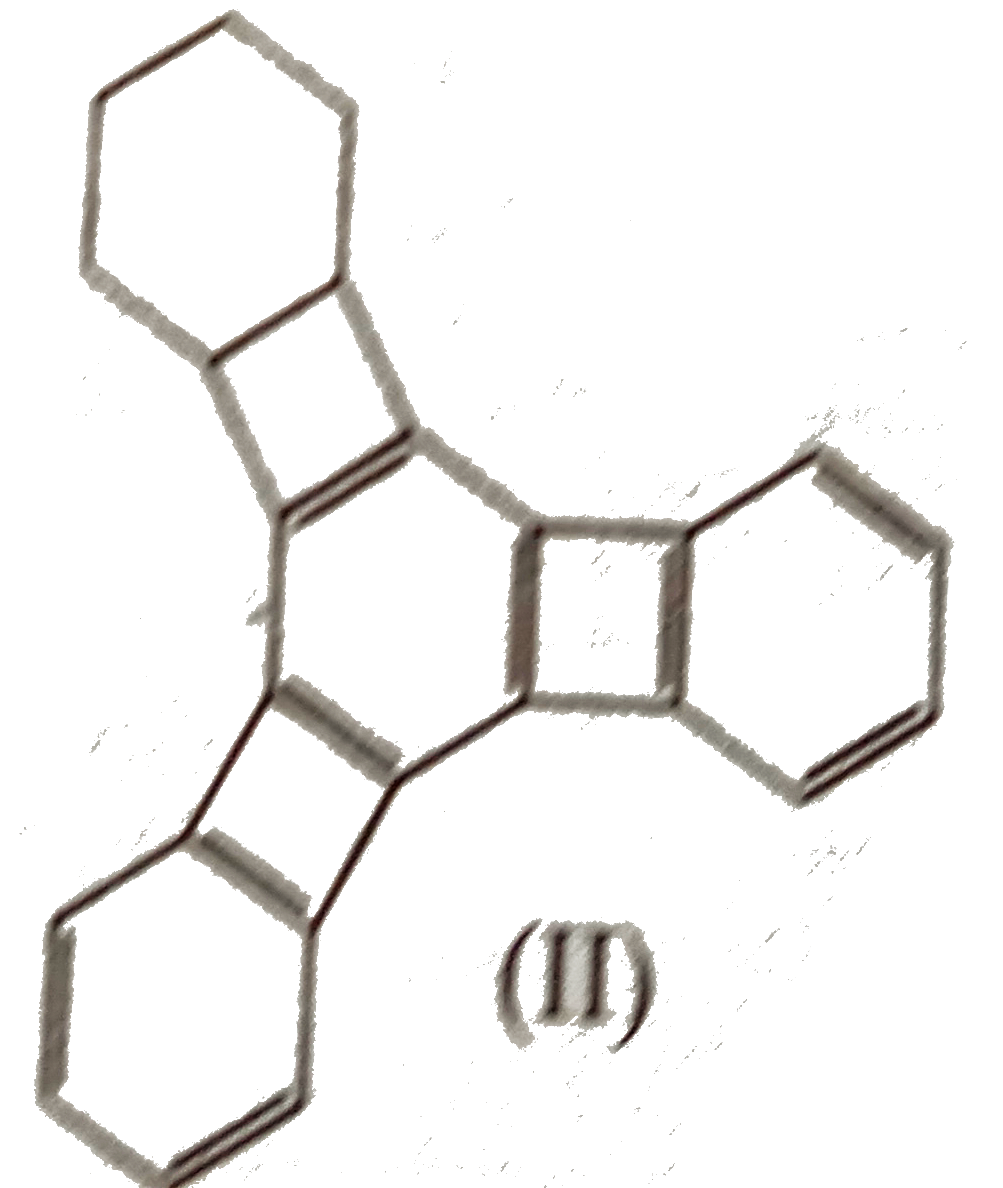
Statement- 2:
Due to the reduction of central ring, 3 four-membered anti-aromatic rings become stable to from (I). In (II), due to the reduction of terminal ring, only one anti-aromatic ring can be stabilised.
View Solution
Knowledge Check
The diagram shows the structure of a fungal cell with different parts labelled as A,B,C and D. Which of the following statements are true with regard to the fungal cell structive?
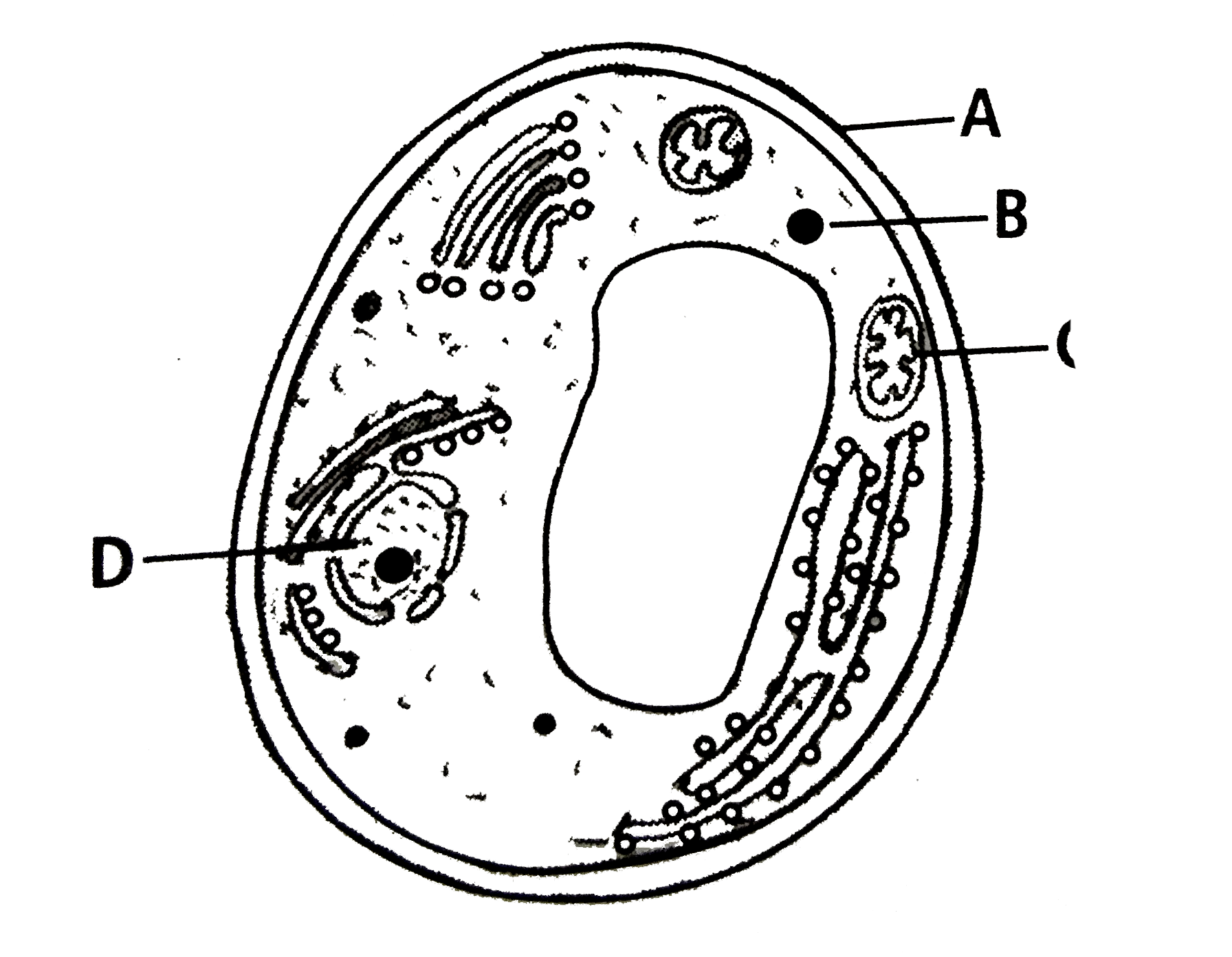
(i) A contains mucopolysaccharides which are also present in exoskeleton of insects and crustaceans.
(ii) D are usually more than one in number in case of aseptate hyphae.
(iii) Carotenes and xanthophylls are present in C, which harvest light energy for photosynthesis.
(iv) B is the reverse food material, usually stored in the form of starch and oil.Ai and iiBiii and ivCi,ii and ivDii,iii and ivThis passage is adapted from Stephen Coleman, Scott Anthony, and David E. Morrison, “Public Trust in the News.” ©2009 by Stephen Coleman.
The news is a form of public knowledge. Unlike personal or private knowledge (such as the health of one’s friends and family, the conduct of a private hobby, a secret liaison), public knowledge increases in value as it is shared by more people. The date of an election and the claims of rival candidates, the causes and consequences of an environmental disaster, a debate about how to frame a particular law, the latest reports from a war zone—these are all examples of public knowledge that people are generally expected to know in order to be considered informed citizens. Thus, in contrast to personal or private knowledge, which is generally left to individuals to pursue or ignore, public knowledge is promoted even to those who might not think it matters to them. In short, the circulation of public knowledge, including the news, is generally regarded as a public good which cannot be solely demand-driven.
The production, circulation, and reception of public knowledge is a complex process. It is generally accepted that public knowledge should be authoritative, but there is not always common agreement about what the public needs to know, who is best placed to relate and explain it, and how authoritative reputations should be determined and evaluated. Historically, newspapers such as The Times and broadcasters such as the BBC were widely regarded as the trusted shapers of authoritative agendas and conventional wisdom. They embodied the Oxford English Dictionary’s definition of authority as the “power over, or title to influence, the opinions of others.” As part of the general process of the transformation of authority whereby there has been a reluctance to uncritically accept traditional sources of public knowledge, the demand has been for all authority to make explicit the frames of value which determine their decisions. Centres of news production, as our focus groups show, have not been exempt from this process. Not surprisingly perhaps some news journalists feel uneasy about this renegotiation of their authority:
Editors are increasingly casting a glance at the “most read” lists on their own and other websites to work out which stories matter to readers and viewers. And now the audience—which used to know its place—is being asked to act as a kind of journalistic ombudsman, ruling on our credibility (broadcast journalist, 2008).
The result of democratising access to TV news could be political disengagement by the majority and a dumbing down through a popularity contest of stories (online news editor, 2007).
Despite the rhetorical bluster of these statements, they amount to more than straightforward professional defensiveness. In their reference to an audience “which used to know its place” and conflation between democratisation and “dumbing down,” they are seeking to argue for a particular mode of public knowledge: one which is shaped by experts, immune from populist pressures, and disseminated to attentive, but mainly passive recipients. It is a view of citizenship that closes down opportunities for popular involvement in the making of public knowledge by reinforcing the professional claims of experts. The journalists quoted above are right to feel uneasy, for there is, at almost every institutional level in contemporary society, scepticism towards the epistemological authority of expert elites. There is a growing feeling, as expressed by several of our focus group participants, that the news media should be “informative rather than authoritative”, the job of journalists should be to “give the news as raw as it is, without putting their slant on it”, and people should be given “sufficient information” from which “we would be able to form opinions of our own.”
At stake here are two distinct conceptions of authority. The journalists we have quoted are resistant to the democratisation of news: the supremacy of the clickstream (according to which editors raise or lower the profile of stories according to the number of readers clicking on them online), the parity of popular culture with “serious” news, the demands of some audience members for raw news rather than constructed narratives.
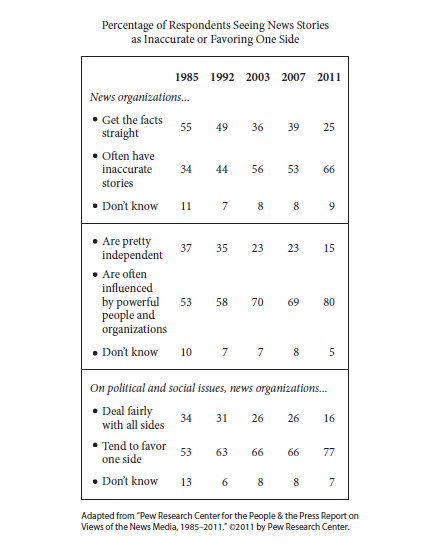
The authors indicate that the public is coming to believe that journalists’ reports should avoidApersonal judgments about the events reportedBmore information than is absolutely necessaryCquotations from authorities on the subject matterDdetails that the subjects of news reports wish to keep private.This passage is adapted from Stephen Coleman, Scott Anthony, and David E. Morrison, “Public Trust in the News.” ©2009 by Stephen Coleman.
The news is a form of public knowledge. Unlike personal or private knowledge (such as the health of one’s friends and family, the conduct of a private hobby, a secret liaison), public knowledge increases in value as it is shared by more people. The date of an election and the claims of rival candidates, the causes and consequences of an environmental disaster, a debate about how to frame a particular law, the latest reports from a war zone—these are all examples of public knowledge that people are generally expected to know in order to be considered informed citizens. Thus, in contrast to personal or private knowledge, which is generally left to individuals to pursue or ignore, public knowledge is promoted even to those who might not think it matters to them. In short, the circulation of public knowledge, including the news, is generally regarded as a public good which cannot be solely demand-driven.
The production, circulation, and reception of public knowledge is a complex process. It is generally accepted that public knowledge should be authoritative, but there is not always common agreement about what the public needs to know, who is best placed to relate and explain it, and how authoritative reputations should be determined and evaluated. Historically, newspapers such as The Times and broadcasters such as the BBC were widely regarded as the trusted shapers of authoritative agendas and conventional wisdom. They embodied the Oxford English Dictionary’s definition of authority as the “power over, or title to influence, the opinions of others.” As part of the general process of the transformation of authority whereby there has been a reluctance to uncritically accept traditional sources of public knowledge, the demand has been for all authority to make explicit the frames of value which determine their decisions. Centres of news production, as our focus groups show, have not been exempt from this process. Not surprisingly perhaps some news journalists feel uneasy about this renegotiation of their authority:
Editors are increasingly casting a glance at the “most read” lists on their own and other websites to work out which stories matter to readers and viewers. And now the audience—which used to know its place—is being asked to act as a kind of journalistic ombudsman, ruling on our credibility (broadcast journalist, 2008).
The result of democratising access to TV news could be political disengagement by the majority and a dumbing down through a popularity contest of stories (online news editor, 2007).
Despite the rhetorical bluster of these statements, they amount to more than straightforward professional defensiveness. In their reference to an audience “which used to know its place” and conflation between democratisation and “dumbing down,” they are seeking to argue for a particular mode of public knowledge: one which is shaped by experts, immune from populist pressures, and disseminated to attentive, but mainly passive recipients. It is a view of citizenship that closes down opportunities for popular involvement in the making of public knowledge by reinforcing the professional claims of experts. The journalists quoted above are right to feel uneasy, for there is, at almost every institutional level in contemporary society, scepticism towards the epistemological authority of expert elites. There is a growing feeling, as expressed by several of our focus group participants, that the news media should be “informative rather than authoritative”, the job of journalists should be to “give the news as raw as it is, without putting their slant on it”, and people should be given “sufficient information” from which “we would be able to form opinions of our own.”
At stake here are two distinct conceptions of authority. The journalists we have quoted are resistant to the democratisation of news: the supremacy of the clickstream (according to which editors raise or lower the profile of stories according to the number of readers clicking on them online), the parity of popular culture with “serious” news, the demands of some audience members for raw news rather than constructed narratives.
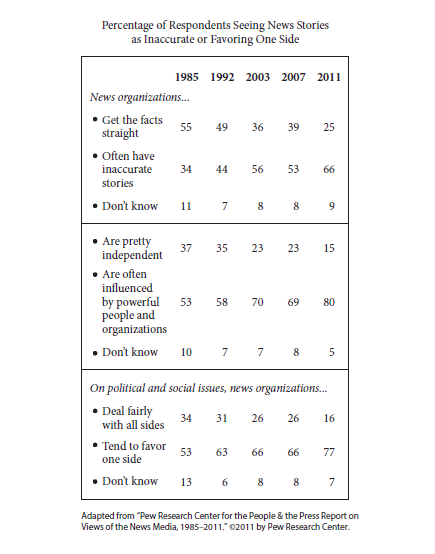
As used in line 24, “common” most nearly meansAnumerous.Bfamiliar.Cwidespread.Dordinary.
Given below are four statements (A-D) , each with one blank. Select the option which correctly fills up the blank in any of the two statements.
i. Materials to be packaged in the form of vesicles from the ER fuse with the ……face of the Golgi apparatus.
ii. Majority of the chloroplasts of the green plants are found in the ..........cells of leaves.
iii. The nucleolus is a site for active ...........synthesis .
iv. During zygotene, chromosomes start pairing together and this process of association is called ............ .
View SolutionLe Chatelier's Principle
If a system at equilibrium is subjected to a change of any one of the factors such as concentration, pressure or temperature, the system adjusts itself in such a way as to nullify the effect of that change.
Change of pressure : If a system consists of gases, then the concentration of all the components can be alterd by changing the pressure. To increase the pressure on the system,the volume has to be decreased proportionally. The total number of mols per unit volume will now be more and the equilibrium will shift in the direction in which there is a decrease in number of moles i,e. towards the direction in which there can be decrease in pressure.
Effect of pressure on melting point : There are two types of solids:
(a) Solids whose volume decreases on melting e.g., ice,diamond carborundum magnesium nitride and quratz.
Solids (higher volume)⇔Liquid (lower volume) The process of melting is facilitated at high pressure, thus, melting point is lowerd.
(b) Solids whose volume increase on melting e.g.,Fe,Cu,Ag,Au,etc.
Solid (lower volume)⇔ Liquid (higher volume) In this case the process of melting become difficult at high pressure, thus melting point becomes high.
(c) Solubility of substances : When solid substances are dissolved in water, either heat is evolved (exothermic) or heat is absorbed (endothermic).
KCI+aq⇔KCI(aq)−heat
In such cases, solubility increase with increase in temperature. Consider the case of KOH, when this is dissolved,heat is evolved.
KOH+aq⇔KOH(aq)+heat
In such cases, solubility decrease with increase in temperature.
(d) Solubility of gases in liquids : When a gas dissolves in liquid,there is decrease in volume. Thus increase of pressure will favour the dissolution of gas in liquid.
Au(s)⇔Au(l)
Above equsilibrium is favoured at :
View SolutionLe Chatelier's Principle
If a system at equilibrium is subjected to a change of any one of the factors such as concentration, pressure or temperature, the system adjusts itself in such a way as to nullify the effect of that change.
Change of pressure : If a system consists of gases, then the concentration of all the components can be alterd by changing the pressure. To increase the pressure on the system,the volume has to be decreased proportionally. The total number of mols per unit volume will now be more and the equilibrium will shift in the direction in which there is a decrease in number of moles i,e. towards the direction in which there can be decrease in pressure.
Effect of pressure on melting point : There are two types of solids:
(a) Solids whose volume decreases on melting e.g., ice,diamond carborundum magnesium nitride and quratz.
Solids (higher volume)⇔Liquid (lower volume) The process of melting is facilitated at high pressure, thus, melting point is lowerd.
(b) Solids whose volume increase on melting e.g.,Fe,Cu,Ag,Au,etc.
Solid (lower volume)⇔ Liquid (higher volume) In this case the process of melting become difficult at high pressure, thus melting point becomes high.
(c) Solubility of substances : When solid substances are dissolved in water, either heat is evolved (exothermic) or heat is absorbed (endothermic).
KCI+aq⇔KCI(aq)−heat
In such cases, solubility increase with increase in temperature. Consider the case of KOH, when this is dissolved,heat is evolved.
KOH+aq⇔KOH(aq)+heat
In such cases, solubility decrease with increase in temperature.
(d) Solubility of gases in liquids : When a gas dissolves in liquid,there is decrease in volume. Thus increase of pressure will favour the dissolution of gas in liquid.
A gas 'X' when dissolved in water,heat is evolved. Then solubility of 'X' will increase:
View SolutionRead statement A-D :−
(A) When some one drinks lot of water, ADH release is decreased.
(B) Exposure to cold temperature suppress ADH release
(C ) Caffeine in Tea and coffee increase sodium absorption from DCT and collecting ducts
(D) ADH also cause vasodilation
Which statements are correct?
(a) A and C
(b) A and B
(c) C and D
(d) B and D
View SolutionThis passage is adapted from Stephen Coleman, Scott Anthony, and David E. Morrison, “Public Trust in the News.” ©2009 by Stephen Coleman.
The news is a form of public knowledge. Unlike personal or private knowledge (such as the health of one’s friends and family, the conduct of a private hobby, a secret liaison), public knowledge increases in value as it is shared by more people. The date of an election and the claims of rival candidates, the causes and consequences of an environmental disaster, a debate about how to frame a particular law, the latest reports from a war zone—these are all examples of public knowledge that people are generally expected to know in order to be considered informed citizens. Thus, in contrast to personal or private knowledge, which is generally left to individuals to pursue or ignore, public knowledge is promoted even to those who might not think it matters to them. In short, the circulation of public knowledge, including the news, is generally regarded as a public good which cannot be solely demand-driven.
The production, circulation, and reception of public knowledge is a complex process. It is generally accepted that public knowledge should be authoritative, but there is not always common agreement about what the public needs to know, who is best placed to relate and explain it, and how authoritative reputations should be determined and evaluated. Historically, newspapers such as The Times and broadcasters such as the BBC were widely regarded as the trusted shapers of authoritative agendas and conventional wisdom. They embodied the Oxford English Dictionary’s definition of authority as the “power over, or title to influence, the opinions of others.” As part of the general process of the transformation of authority whereby there has been a reluctance to uncritically accept traditional sources of public knowledge, the demand has been for all authority to make explicit the frames of value which determine their decisions. Centres of news production, as our focus groups show, have not been exempt from this process. Not surprisingly perhaps some news journalists feel uneasy about this renegotiation of their authority:
Editors are increasingly casting a glance at the “most read” lists on their own and other websites to work out which stories matter to readers and viewers. And now the audience—which used to know its place—is being asked to act as a kind of journalistic ombudsman, ruling on our credibility (broadcast journalist, 2008).
The result of democratising access to TV news could be political disengagement by the majority and a dumbing down through a popularity contest of stories (online news editor, 2007).
Despite the rhetorical bluster of these statements, they amount to more than straightforward professional defensiveness. In their reference to an audience “which used to know its place” and conflation between democratisation and “dumbing down,” they are seeking to argue for a particular mode of public knowledge: one which is shaped by experts, immune from populist pressures, and disseminated to attentive, but mainly passive recipients. It is a view of citizenship that closes down opportunities for popular involvement in the making of public knowledge by reinforcing the professional claims of experts. The journalists quoted above are right to feel uneasy, for there is, at almost every institutional level in contemporary society, scepticism towards the epistemological authority of expert elites. There is a growing feeling, as expressed by several of our focus group participants, that the news media should be “informative rather than authoritative”, the job of journalists should be to “give the news as raw as it is, without putting their slant on it”, and people should be given “sufficient information” from which “we would be able to form opinions of our own.”
At stake here are two distinct conceptions of authority. The journalists we have quoted are resistant to the democratisation of news: the supremacy of the clickstream (according to which editors raise or lower the profile of stories according to the number of readers clicking on them online), the parity of popular culture with “serious” news, the demands of some audience members for raw news rather than constructed narratives.
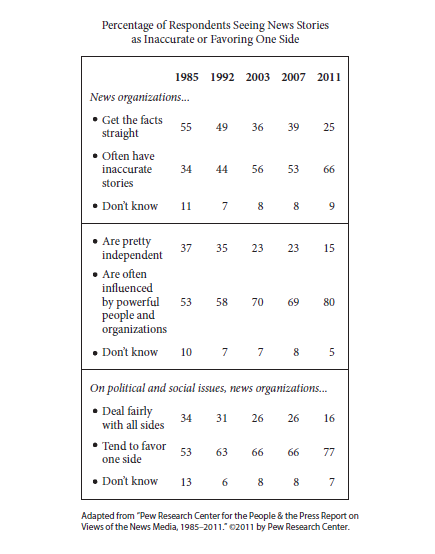
As used in line 74, “raw” most nearly means
View Solution
